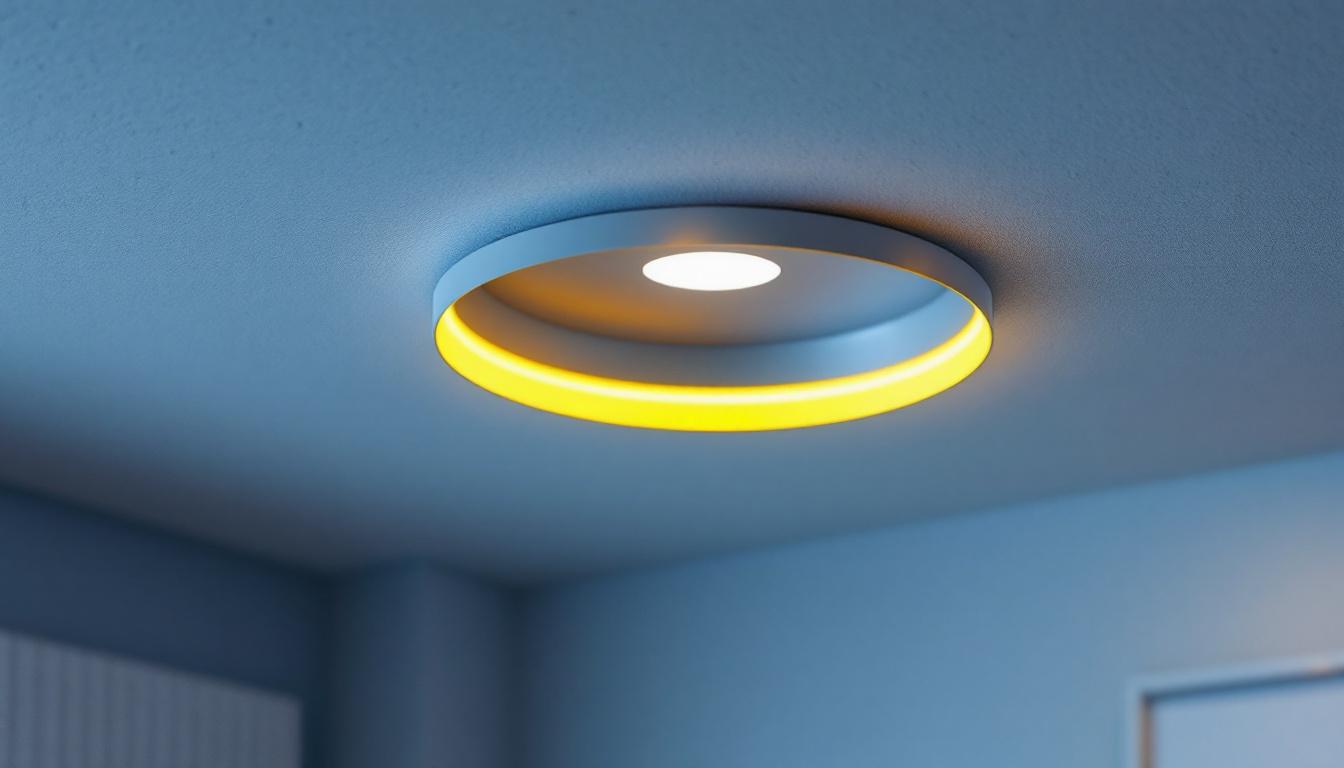
For lighting contractors, understanding the nuances of light bulb flashing is essential for delivering quality service. This phenomenon can often be a source of frustration for both contractors and clients alike. However, by grasping the underlying causes and knowing how to choose the right bulbs, contractors can ensure their projects are completed efficiently and effectively. This guide aims to provide valuable insights into the world of light bulb flashing, helping contractors make informed decisions.
Light bulb flashing refers to the intermittent flickering or blinking of light bulbs, which can occur for various reasons. This issue can be particularly challenging to diagnose, as it may stem from electrical problems, bulb compatibility, or even the type of fixture being used. Understanding these factors is crucial for any lighting contractor looking to provide reliable solutions.
There are several reasons why light bulbs may flash. One of the most common culprits is a loose connection within the fixture or wiring. When connections are not secure, it can lead to inconsistent electrical flow, causing the bulb to flicker. Additionally, fluctuations in voltage can also result in flashing, especially if the electrical system is overloaded or improperly wired.
Another significant factor is the compatibility of the bulb with the fixture or dimmer switch. Certain LED bulbs may not work well with older dimmers, leading to flashing or flickering. It’s essential for contractors to be aware of these compatibility issues when selecting bulbs for their projects. Furthermore, the type of bulb itself plays a role; for instance, incandescent bulbs tend to have a more stable light output compared to their LED counterparts, which may require specific drivers or transformers to function correctly. Understanding these nuances can greatly aid in troubleshooting and ensuring a successful installation.
Light bulb flashing can greatly affect client satisfaction. Homeowners and business owners expect their lighting to function seamlessly, and any flickering can lead to frustration. As a contractor, addressing these issues promptly and effectively can enhance your reputation and foster trust with your clients. Providing solutions that not only fix the problem but also educate clients on the causes can set you apart from competitors. Moreover, offering maintenance tips or suggesting energy-efficient alternatives can further demonstrate your commitment to quality service and customer care.
Additionally, the aesthetic impact of flickering lights should not be underestimated. In commercial settings, for instance, a flickering bulb can distract customers and create an unprofessional atmosphere, potentially affecting sales. In residential spaces, it can disrupt the ambiance and comfort of a home. By recognizing the broader implications of light bulb flashing, contractors can position themselves as not only problem solvers but also as valuable partners in creating inviting and functional spaces. This proactive approach can lead to long-term relationships with clients who appreciate the added value of informed guidance and reliable service.
When it comes to selecting light bulbs, contractors must consider several factors to ensure optimal performance and longevity. The right choice can prevent issues such as flashing and enhance the overall aesthetic of a space. Moreover, understanding the specific needs of the environment—be it residential, commercial, or industrial—can significantly influence the decision-making process. For instance, a cozy living room may benefit from warm-toned bulbs to create a welcoming atmosphere, while a workspace might require brighter, cooler light to enhance productivity.
There are various types of light bulbs available in the market, each with its unique characteristics. Incandescent bulbs are known for their warm light and compatibility with most fixtures, but they are less energy-efficient compared to other options. On the other hand, LED bulbs are increasingly popular due to their energy efficiency and long lifespan. However, they can sometimes be incompatible with older dimmer switches, leading to flashing. This incompatibility can be a significant concern for contractors, as it may necessitate additional upgrades to the electrical system, which could impact project timelines and budgets.
Fluorescent bulbs are another option, often used in commercial settings. They provide bright light but may flicker if not properly installed or if the ballast is failing. Understanding these differences is crucial for contractors to recommend the best bulb type for specific applications. Additionally, compact fluorescent lamps (CFLs) offer a middle ground between incandescent and LED bulbs, providing decent energy savings while still being compatible with many existing fixtures. However, they contain small amounts of mercury, which requires careful disposal and consideration during installation.
Energy efficiency is a key consideration for many clients today. LED bulbs, for instance, consume significantly less energy than incandescent bulbs, making them an attractive option for those looking to reduce their energy bills. Additionally, the longevity of LED bulbs means less frequent replacements, which can save both time and money in the long run. With an average lifespan of up to 25,000 hours, LED bulbs can last over 25 times longer than traditional incandescent bulbs, making them a smart investment for both residential and commercial applications.
Contractors should also educate clients about the benefits of energy-efficient lighting solutions. By highlighting the long-term savings and environmental advantages, contractors can help clients make informed decisions that align with their values. Furthermore, many regions offer incentives or rebates for installing energy-efficient lighting, which can further offset initial costs. By staying informed about local programs, contractors can provide valuable insights to clients, ensuring they maximize their investment while contributing to a more sustainable future. This proactive approach not only enhances client satisfaction but also positions contractors as knowledgeable experts in the field of energy-efficient lighting solutions.
Once a contractor has identified the cause of light bulb flashing, the next step is to address the issue effectively. This may involve troubleshooting the electrical system, replacing incompatible bulbs, or upgrading fixtures.
When faced with light bulb flashing, the first step is to inspect the electrical system. This includes checking for loose connections, damaged wiring, and ensuring that the circuit is not overloaded. A thorough inspection can often reveal underlying issues that may not be immediately apparent. It’s also advisable to use a multimeter to measure voltage levels and ensure that they are within the recommended range for the fixtures and bulbs in use. This can help pinpoint if there are fluctuations in power supply that might be causing the flickering.
If the electrical system appears to be in good condition, contractors should then consider the compatibility of the bulbs being used. It may be necessary to replace dimmer switches or fixtures to accommodate newer bulb technologies, such as LEDs. Understanding the wattage and voltage requirements of different bulb types is crucial, as using bulbs with inappropriate specifications can lead to further complications.
In some cases, upgrading fixtures or dimmer switches may be the best solution to prevent flashing. Many older dimmers are not designed to work with LED bulbs, which can lead to flickering. By recommending modern dimmers that are compatible with a wide range of bulb types, contractors can help clients achieve a stable lighting solution. These newer dimmers often feature advanced technology that allows for smoother transitions and better control over light intensity, enhancing the overall ambiance of a space.
Additionally, ensuring that fixtures are rated for the specific type of bulbs being used can prevent issues down the line. Contractors should always check the manufacturer’s specifications to ensure compatibility. It’s also worth considering the installation of smart lighting systems, which not only provide compatibility with various bulb types but also offer features such as remote control and programmable settings. This can enhance energy efficiency and provide users with greater flexibility in managing their lighting needs, ultimately leading to a more satisfying and functional environment.
Once the right bulbs and fixtures have been chosen, educating clients on proper maintenance is essential for preventing future issues. Regular maintenance can extend the lifespan of lighting systems and reduce the likelihood of flashing.
Encouraging clients to conduct regular inspections of their lighting systems can help identify potential problems before they escalate. This includes checking for loose connections, signs of wear, and ensuring that bulbs are functioning properly. By being proactive, clients can avoid the inconvenience of flickering lights.
Contractors can offer to schedule routine maintenance visits, which can serve as an additional service that enhances client satisfaction and loyalty. This approach not only ensures that lighting systems remain in optimal condition but also positions the contractor as a trusted expert in the field.
Clients should also be advised to replace bulbs promptly when they begin to flicker or show signs of wear. Delaying replacements can lead to more significant issues, including damage to fixtures or the electrical system. By educating clients on the importance of timely bulb replacement, contractors can help maintain the integrity of their lighting systems.
Light bulb flashing can be a frustrating issue for both contractors and clients, but with the right knowledge and tools, it can be effectively managed. By understanding the causes of flashing, choosing the appropriate bulbs, and addressing issues promptly, contractors can ensure their projects are completed to the highest standards.
Moreover, educating clients on maintenance and the importance of energy-efficient solutions can foster long-term relationships and enhance overall satisfaction. In a competitive market, being well-versed in these aspects can set contractors apart and lead to greater success in their endeavors.
Ultimately, the goal is to provide clients with reliable, efficient, and aesthetically pleasing lighting solutions that meet their needs and expectations. By following this guide, lighting contractors can navigate the complexities of light bulb flashing and deliver exceptional service.
Ready to elevate your lighting game? At LumenWholesale, we provide lighting contractors like you with the highest quality, spec-grade lighting products at prices that can’t be beaten. Say goodbye to local distributor markups and hello to a vast selection of reliable, high-performance lighting that meets the most rigorous industry standards. Plus, with free shipping on bulk orders, you can stock up on premium lighting solutions without worrying about hidden fees. Don’t compromise on quality or value—choose Wholesale Lighting at the Best Value and make every project shine with LumenWholesale.

Discover essential tips and strategies to steer clear of expensive errors in your lighting projects.

Discover the ultimate guide to wall lamps and sconces with insights from top lighting contractors.

Discover essential tips for selecting and installing recessed emergency lights to prevent expensive errors in your lighting projects.

Explore how plastic junction box covers play a crucial role in enhancing energy efficiency in modern buildings.